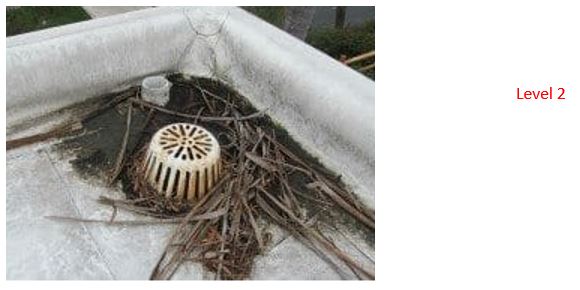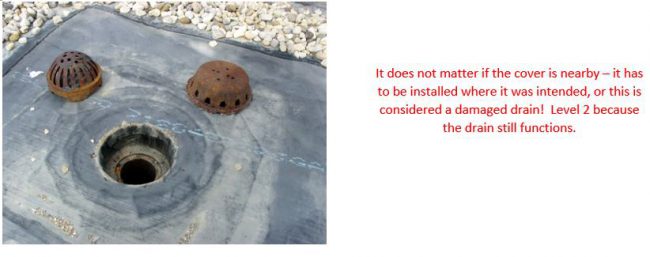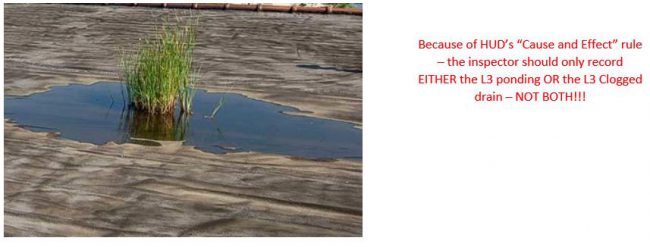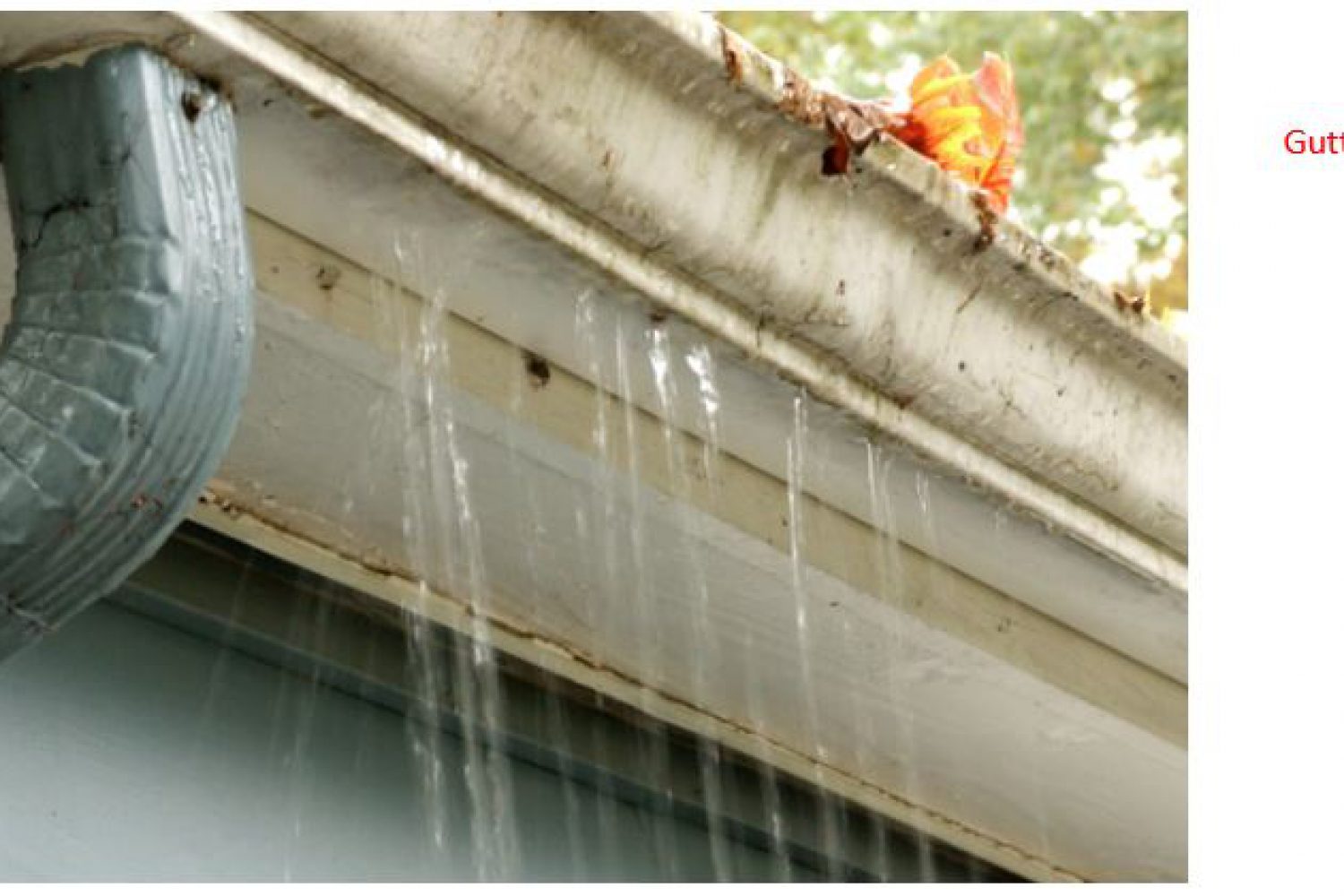In this October 2022 issue of our HUD-REAC Monthly Newsletter, I am going to discuss the deficiency: Roofs – Damaged/Clogged Drains and explain how you should handle clogged gutters.
Per the Federal Register (Compilation Bulletin contains no clarifications on this subject)
Deficiency: Exterior – Roofs – Damaged/Clogged Drains
- The drainage system does not effectively remove water. Generally, this deficiency applies to flat roofs.
- NOTE:
- THIS DOES NOT INCLUDE GUTTERS AND DOWNSPOUTS For these, see “Missing/Damaged Components from Downspout/Gutter”
- If there has been measurable precipitation (1/10 inch or more) during the previous 48 hours, consider the impact on the extent of the ponding. Determine that ponding has occurred only when there is clear evidence of a persistent or long-standing problem.
Level 1: N/A
Level 2: You see debris around or in a drain but no evidence of ponding
–OR—
The drain is damaged or partially clogged with debris, but the drain system still functions and you see no evidence of ponding.
Level 3: The drain is so damaged or clogged with debris that the drain no longer functions, as shown by ponding.
Let me address first Note #1 – This does not include gutters and downspouts – refer to “Missing/Damaged Components from Downspout/Gutter” deficiency.
When you refer to that deficiency, it states in the Notes: “This does not include clogged drains. For clogged drains, see “Damaged/Clogged Drains!”
So did HUD make a mistake by sending us in circles because gutter debris does not seem to fit in any single deficiency? Does that mean inspectors should not record debris in the gutters anywhere?
I called 7 inspectors to ask what they would do if they saw debris in a gutter.
- 4 of them (as well as myself) would not record debris in the gutter…unless it was raining during the inspection and water was pouring over the side (i.e. the gutter is not doing its job – Level 2 under Missing/Damaged Components from Downspout/Gutter.

- 1 said they would record it Site/Overgrown penetrating vegetation – the Compilation Bulletin states GROWTH in the gutter should be recorded there…but what about dead vegetation? I think this would be a difficult appeal
- 1 stated they would record it under Downspouts/Gutter – which would be a simple appeal IF the inspector wrote the word “clogged” in the comment section indicating it was not recorded for any other reason than the debris. As previously mentioned, the Federal Register states NOT to consider clogged drains in this category.
- The last one said they would record it under Clogged Drains – this would be the easiest appeal since the Federal Register is clear to NOT consider gutters/downspouts for that deficiency.
My recommendation?
Make it a NON-ISSUE! Just clean the gutters prior to the REAC inspection. Most properties clean them twice a year – just make sure it’s done before the inspection date so this does not even come up in conversation, let alone having to go through an appeal for something so simple to fix!
Let’s go back to the deficiency Damaged/Clogged Drains.
The first part of the L2 deficiency is that debris is around or in a drain but no evidence of ponding

The second part of the L2 deficiency is: The drain is damaged or partially clogged with debris, but the drain system still functions and you see no evidence of ponding.
HUD believes the words “damaged” and “missing” are synonymous. So just the drain cover missing from where it is supposed to be is considered “damaged!”

The Level 3 is pretty self-explanatory – the drain is so damaged or clogged with debris, that the drain no longer functions – as shown by ponding. What I find interesting here is that it clearly states ponding should exist in order to record the Level 3. Under the “Roof-Ponding” deficiency, however, you do not need to actually see standing water, but rather just evidence that water builds up. This could be a stain on the roof, damaged membrane, algae/moss growth, etc. Click here to read my August Newsletter on Ponding.


